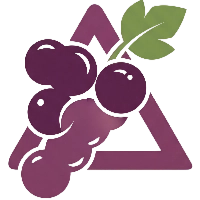Have you ever wanted to create your own luxurious, moisturizing soap? Goat milk soap is a fantastic place to start. Known for its gentle, creamy lather, it's a popular choice for people with sensitive or dry skin. While the idea of using lye might seem intimidating, with the right safety precautions, making soap at home is a rewarding and fun project.
This guide will walk you through a simple cold process goat milk soap recipe, ensuring you have all the information you need to make your first perfect batch.
Why Make Your Own Goat Milk Soap?
Making your own soap gives you complete control over the ingredients, ensuring it's free from harsh chemicals and artificial additives. Plus, the naturally occurring alpha-hydroxy acid and vitamins in goat milk are known to nourish and hydrate the skin, leaving it feeling soft and smooth. The rich, creamy lather you get from a cold process soap is simply unmatched by store-bought bars.
Lye Safety First: A Critical Warning
Before you begin, you must understand and practice lye safety. Lye, or sodium hydroxide, is a caustic chemical and can cause severe burns if it comes into contact with your skin.
Always wear safety gear:
Goggles: To protect your eyes from splashes.
Gloves: Thick, rubber gloves to protect your hands.
Long-sleeved shirt and pants: To protect your skin.
Work in a well-ventilated area to avoid inhaling fumes.
NEVER add water to lye. ALWAYS add lye to the liquid (in this case, frozen goat milk).
What You'll Need: Ingredients and Equipment
This recipe is designed to be simple and effective for beginners. All ingredients can be found online or at your local soap-making supply store.
Ingredients:
Frozen Goat Milk: 16 oz (454 g)
Lye (Sodium Hydroxide): 6.2 oz (176 g)
Coconut Oil: 10 oz (283 g) - Provides cleansing and hardens the bar.
Olive Oil: 15 oz (425 g) - Adds a gentle, moisturizing quality.
Shea Butter: 7 oz (198 g) - Makes the soap creamy and nourishing.
Equipment:
Digital kitchen scale
Stainless steel or heat-resistant plastic container for the lye solution
Large stainless steel pot for the oils
Stick blender
Silicone spatula
Soap mold (silicone loaf mold works well)
Small towels or blankets for insulation
Step-by-Step Guide to Making Goat Milk Soap
Step 1: Prepare the Frozen Goat Milk
Place your frozen goat milk cubes into a heat-resistant container. Carefully and slowly sprinkle the lye over the milk, stirring with a spatula. The lye will heat up the milk, so do this gently. The mixture will become a yellow-orange color. Keep stirring until all the lye is dissolved. Set this mixture aside to cool.
Step 2: Melt and Mix the Oils
In your large pot, melt the coconut oil and shea butter over low heat. Once melted, add the olive oil. Stir to combine and let the mixture cool to about 100-110°F (38-43°C). The lye solution should also cool to a similar temperature.
Step 3: Combine and Reach "Trace"
Once both the lye solution and the oil mixture are at the correct temperature, slowly pour the lye solution into the oils. Use a stick blender to mix the two. Blend in short bursts, stirring in between, until the mixture thickens to what's known as "trace." This is when the soap batter leaves a visible trail on the surface when you drizzle it with the stick blender.
Step 4: Pour and Cure
Quickly pour your soap mixture into the mold. Cover the mold with a piece of cardboard and then wrap it in towels or blankets to insulate it. Let it sit for 24-48 hours. After this time, your soap should be firm enough to slice into bars. Once sliced, place the bars on a wire rack in a well-ventilated area for 4-6 weeks to cure. This process allows water to evaporate, creating a harder, longer-lasting, and milder soap bar.
Making your own soap is an incredibly rewarding process that connects you to the ingredients you use every day. With a little care and patience, you'll soon have a batch of beautiful, nourishing goat milk soap that's perfect for your skin.


